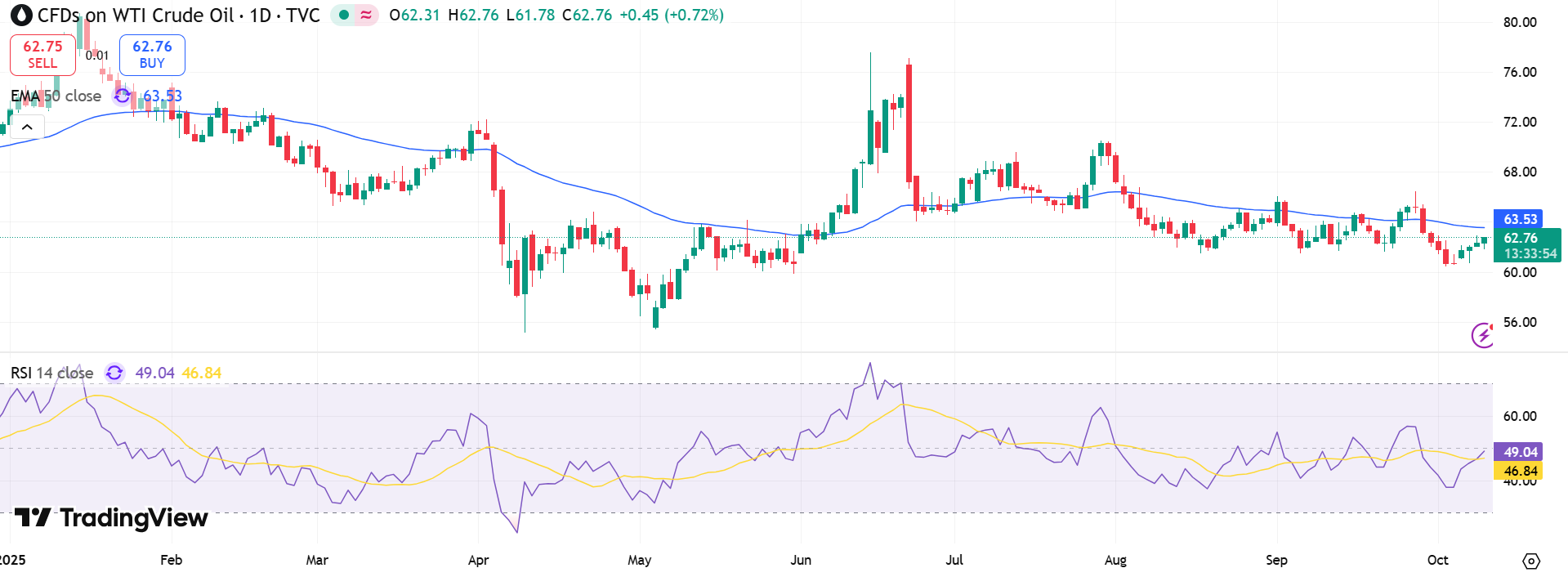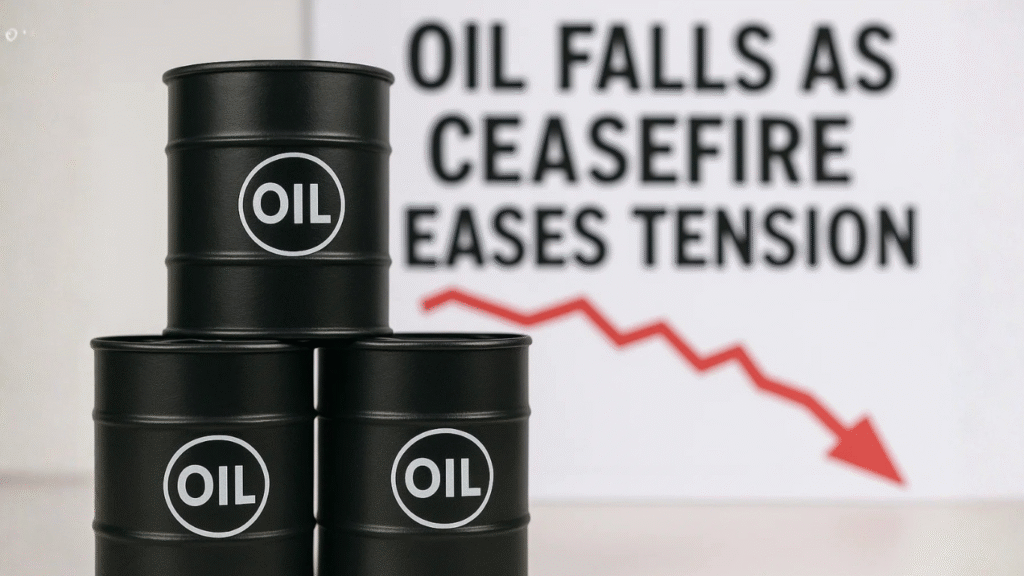Oil prices declined on Thursday as signs of a Gaza ceasefire reduced geopolitical risks that had fueled energy market volatility in recent months. Brent crude futures fell $0.34 (0.51%) to $65.91 per barrel, while U.S. West Texas Intermediate (WTI) dropped $0.38 (0.61%) to $62.17 by 04:13 GMT.
The retreat follows an announcement from U.S. President Donald Trump confirming that Israel and Hamas reached an initial agreement to halt fighting and begin a multi-phase plan to end the two-year conflict in Gaza. Israeli Prime Minister Benjamin Netanyahu is expected to convene his cabinet for formal approval of the accord.
“WTI crude is trading weaker today due to a reduced geopolitical risk premium following the Israel-Hamas peace deal,” said Kelvin Wong, senior market analyst at OANDA.
Dollar Strength Adds Pressure to Commodities
The oil market also faced downward pressure from a resurgent U.S. dollar, which hit multi-week highs against both the euro and Japanese yen. A stronger dollar typically makes dollar-priced commodities more expensive for holders of other currencies, curbing global demand.
Michael McCarthy, CEO of Moomoo Australia and New Zealand, noted that while the ceasefire could ease market fears, it is unlikely to immediately affect oil supply in the Middle East. “OPEC+ has yet to meet its output targets, and supply-side fundamentals remain unchanged,” McCarthy said.
The OPEC+ alliance—which includes the Organization of the Petroleum Exporting Countries and its allies—recently agreed to a modest production increase beginning in November, a move smaller than many analysts expected. The decision temporarily eased concerns about oversupply but did little to reverse the market’s cautious tone.
Global Demand Trends Show Slower Momentum
Despite easing geopolitical tension, energy consumption indicators suggest a softer start to the fourth quarter.

According to JP Morgan, global oil demand averaged 105.9 million barrels per day (bpd) during the first week of October, about 90,000 bpd below forecasts, though still up 300,000 bpd from a year earlier.
Key consumption metrics—such as container arrivals at the Port of Los Angeles, truck mileage in Germany, and container throughput in China—all indicate moderated industrial activity.
- U.S. petroleum product demand rose to 21.99 million bpd, the highest since December 2022.
- Global crude and product inventories increased by 8 million barrels last week, marking the slowest build in five weeks.
With investors recalibrating expectations for both demand recovery and supply stability, oil prices may remain range-bound in the near term, as markets weigh the durability of the ceasefire and the dollar’s continued strength.


